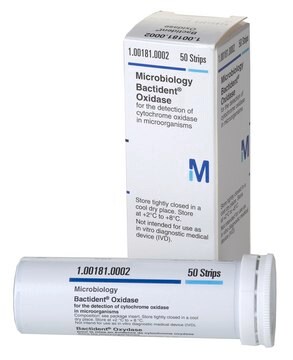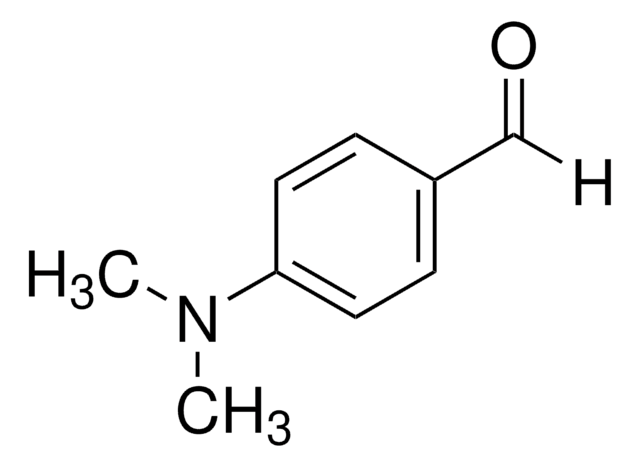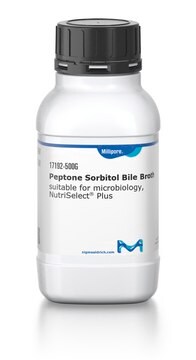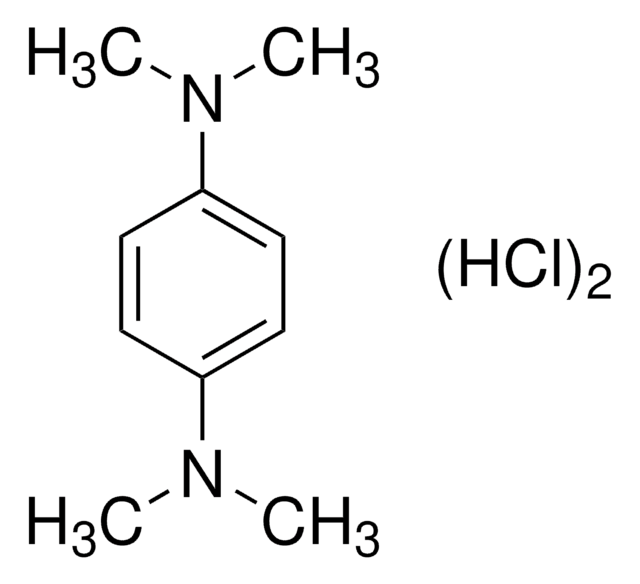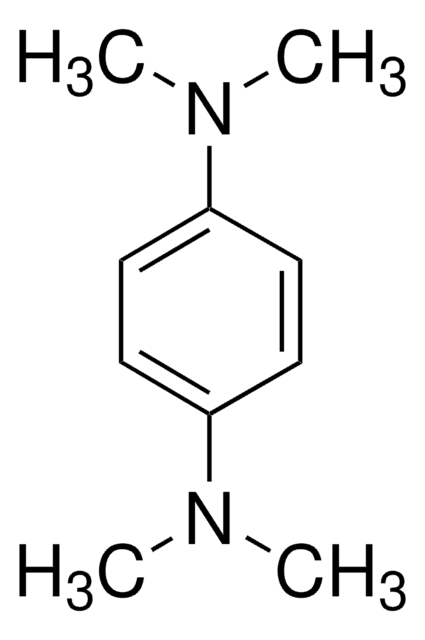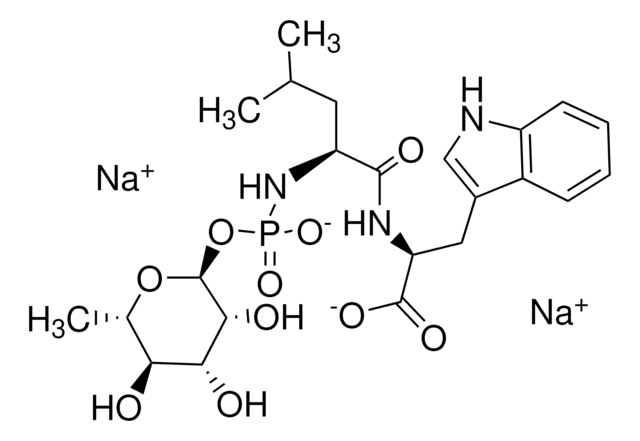18502
Oxidase Reagent according to Gordon-McLeod
suitable for microbiology
Sinónimos:
Gordon-McLeod Reagent
About This Item
Productos recomendados
Agency
according to ISO 9308-1:2014
Nivel de calidad
Línea del producto
BioChemika
caducidad
limited shelf life, expiry date on the label
composición
N,N-dimethyl-p-phenylenediamine hydrochloride, 0.15 g
water, 10 mL
envase
pkg of 100 mL
condiciones de almacenamiento
(Tightly closed)
técnicas
microbe id | specific enzyme detection: suitable
espectro de actividad antibiótica
Gram-negative bacteria
aplicaciones
clinical testing
environmental
food and beverages
pharmaceutical
microbiology
idoneidad
Plesiomonas spp.
Aeromonas spp.
Neisseria spp.
Pseudomonas spp.
bacteria
Descripción general
Aplicación
Palabra de señalización
Danger
Frases de peligro
Consejos de prudencia
Clasificaciones de peligro
Resp. Sens. 1
Código de clase de almacenamiento
10 - Combustible liquids
Clase de riesgo para el agua (WGK)
WGK 2
Punto de inflamabilidad (°F)
Not applicable
Punto de inflamabilidad (°C)
Not applicable
Equipo de protección personal
Eyeshields, Faceshields, Gloves
Elija entre una de las versiones más recientes:
¿Ya tiene este producto?
Encuentre la documentación para los productos que ha comprado recientemente en la Biblioteca de documentos.
Los clientes también vieron
Artículos
Vibrio Detection
On the Trail of Campylobacter
Chromogenic media enable the selective detection of S. aureus, which produce bluish-green colonies that are clearly differentiated from other species.
For microbiologists the most fundamental stain was developed in 1884 by the Danish bacteriologist Hans Christian Gram.
Protocolos
In recent years it has been recognized that Listeria is an important public health problem. The disease affects primarily people of advanced age, pregnant women, newborns, and adults with weakened immune systems.
Nuestro equipo de científicos tiene experiencia en todas las áreas de investigación: Ciencias de la vida, Ciencia de los materiales, Síntesis química, Cromatografía, Analítica y muchas otras.
Póngase en contacto con el Servicio técnico
